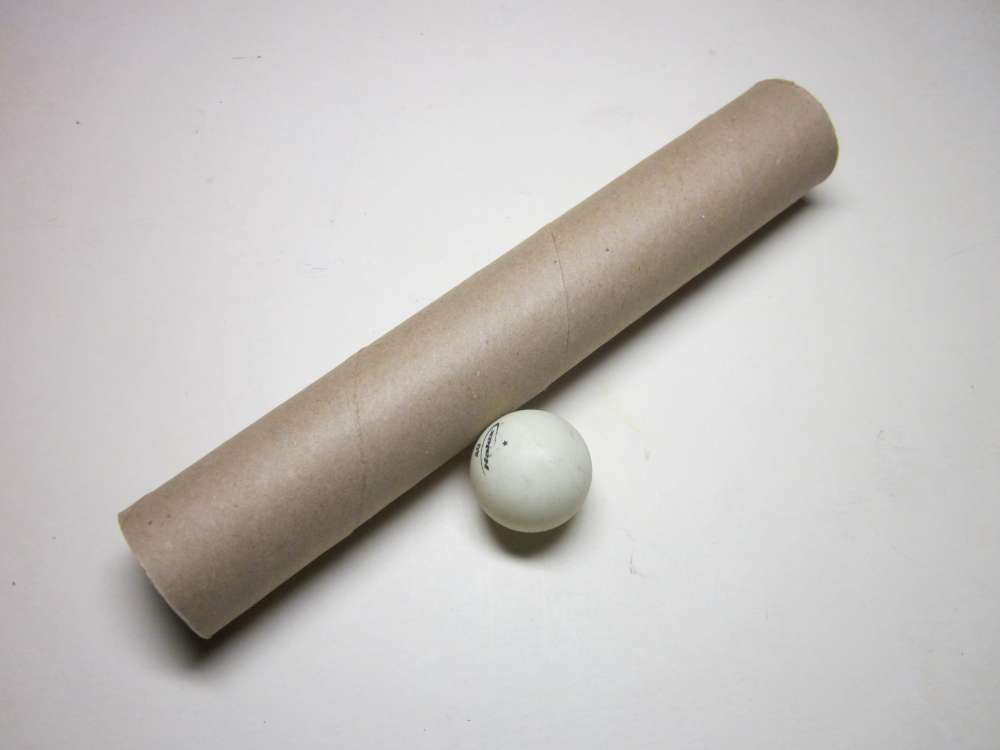The curve ball demonstration uses a ping-pong ball and a 1 3/4”diameter, 11” long cardboard tube from a paper towel roll.

To demonstrate a curve ball, hold the tube at one end with a little finger across the open end, drop the ball into the other end of the tube and let it roll down to rest against the little finger. Now flick the tube sideways or overhead to throw the ball from the tube.
Air consists of molecules, small particles that zoom around randomly bouncing off of each other and solid objects they come in contact with. The random motion is known as Brownian motion. When they bounce off solid objects, there is a transfer of momentum. That change of momentum diffuses outward from the object as the bounced molecules move outward and collide with other air molecules.
As the ball rolls out of the tube, friction with the inside of the tube gives it a spin. When it comes in contact with the air, it imparts a circulating motion to the air around the ball. The circulation combines with the forward motion through the air to produce a curving airflow around the ball. The curvature is convex across the part of the ball that is moving backward and concave on the side which is moving forward. Air moving along a curve experiences a centrifugal force toward the outside of the curve. For the flow pattern to be steady, there must be a balancing pressure force in the opposite direction, higher pressure on the outside of the curve. Since atmospheric pressure some distance from the ball is the same on both sides, the pressure on the backward moving part of the ball must be lower than atmospheric and the pressure on the forward moving part of the ball must be higher than atmospheric. That means the pressure on the backwards side of the ball is less than the pressure on the forward moving side, producing a force that pulls the ball toward the outside of the curve, causing the ball to curve away from a straight path. This is known as the Magnus effect.
If you flick the tube sideways you will see a nice curve ball. If you flick the tube overhead you will see the ball curve upward.